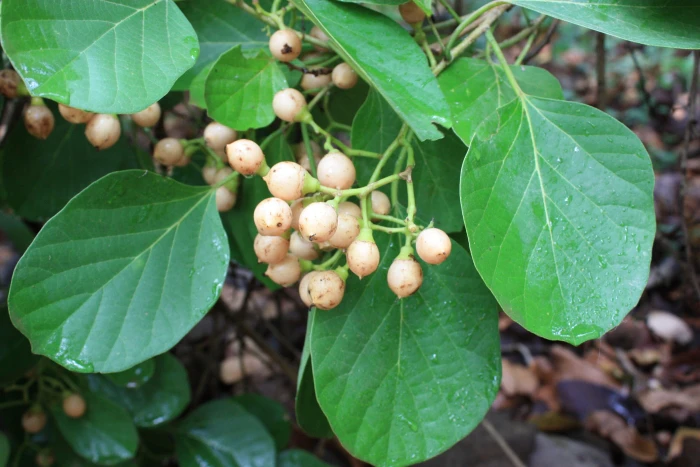Assyrian Plum
(Cordia myxa)
Assyrian Plum (Cordia myxa)
/
/

Marco Schmidt [1]
CC BY-SA 3.0
Image By:
Marco Schmidt [1]
Recorded By:
Copyright:
CC BY-SA 3.0
Copyright Notice:
Photo by: Marco Schmidt [1] | License Type: CC BY-SA 3.0 | License URL: https://creativecommons.org/licenses/by-sa/3.0 | Uploader: Marco Schmidt | Publisher: Wikimedia Commons | Title: Cordia_myxa_MS_1790.jpg | Notes: Transferred from Flickr via [[Commons:Flickr2Commons|Flickr2Commons]] |






























Estimated Native Range
Climate Requirements for Antelope, California
| This Plant | Your Site | Plant Suitability for Your Location | ||
|---|---|---|---|---|
| • Precipitation | 30" - 71" | 20" | Your precipitation may be insufficient for this plant. Irrigate N" / year. | Irrigate N" / year |
| • High Temp. | 86°F - 103°F | 95°F | Your summer temperatures are normal for this plant. | Excellent |
| • Low Temp. | 47°F - 67°F | 38°F | Your winter temperatures are normal for this plant | Excellent |
This plant should grow well at your location with about N inches per year (Y minutes per month) of irrigation.
Summary
Cordia myxa, commonly known as Assyrian Plum or Lasura, is a deciduous tree native to semi-arid regions, including savannas, dry deciduous forests, and scrublands across the Middle East and South Asia. It typically grows to a height and width of 16-20 feet (5-6 meters), with a dense, rounded canopy and a short, often crooked trunk. The leaves are broad and heart-shaped, providing a lush appearance. The tree produces clusters of small, cream-colored flowers during the winter months, which are modest in showiness but attract pollinators. Following flowering, it bears edible fruits that are green, turning yellowish-brown when ripe, and have a sticky pulp.
Assyrian Plum is valued for its ability to thrive in hot, dry climates, making it suitable for xeriscaping and urban environments where water conservation is a priority. It is often used for shade, ornamental purposes, and as a fruit tree in home gardens and public landscapes. The fruits are used in traditional medicine and can be made into preserves. Cultivation requires full sun exposure and well-drained soils, though it is tolerant of a range of soil types. It is relatively low-maintenance once established, with moderate water needs. While generally pest-resistant, it can be susceptible to root rot in poorly drained soils.CC BY-SA 4.0
Assyrian Plum is valued for its ability to thrive in hot, dry climates, making it suitable for xeriscaping and urban environments where water conservation is a priority. It is often used for shade, ornamental purposes, and as a fruit tree in home gardens and public landscapes. The fruits are used in traditional medicine and can be made into preserves. Cultivation requires full sun exposure and well-drained soils, though it is tolerant of a range of soil types. It is relatively low-maintenance once established, with moderate water needs. While generally pest-resistant, it can be susceptible to root rot in poorly drained soils.CC BY-SA 4.0
Plant Description
- Plant Type: Tree
- Height: 16-20 feet
- Width: 16-20 feet
- Growth Rate: Moderate
- Flower Color: Cream
- Flowering Season: Winter
- Leaf Retention: Deciduous
Growth Requirements
- Sun: Full Sun
- Water: Medium
- Drainage: Fast
Common Uses
Bee Garden, Bird Garden, Butterfly Garden, Hummingbird Garden, Low Maintenance
Natural Habitat
native to semi-arid regions, including savannas, dry deciduous forests, and scrublands across the Middle East and South Asia
Other Names
Common Names: Indian-Cherry, Sudan-Teak, Clammy-Cherry, Sapistan, Sapistan-Tree, Glueberry, Sebastan-Tree, Sebesten-Plum, Selu, Assyrian-Plum
Scientific Names: Cordia myxa, Cordia latifolia, Sebestena myxa, Cordia petta-pelioporet, Cordia scabrifolia, Ehretia glabra, Lithocardium myxa, Sebestena officinalis, Vitex gomphophylla
GBIF Accepted Name: Cordia myxa L.